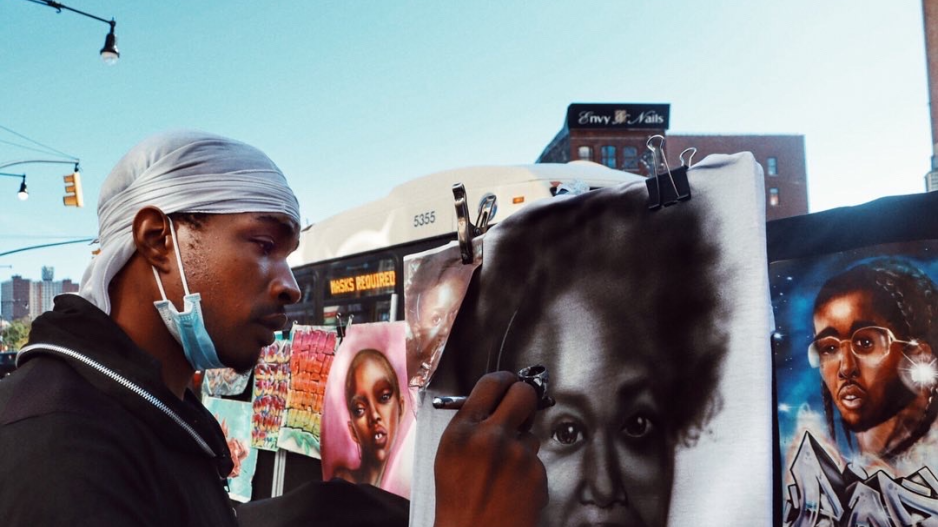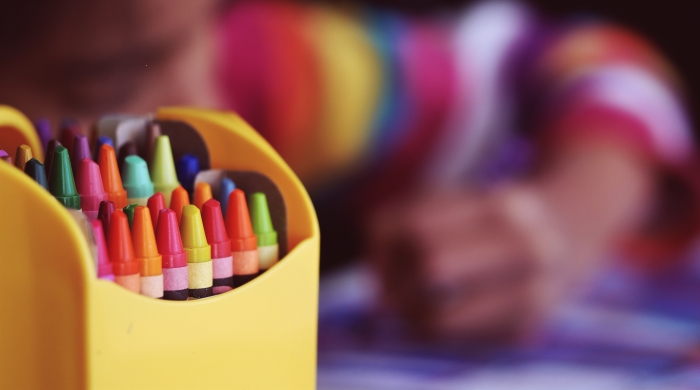Written by Hira Hassan
Academic writing relies on complex terminology, excessive acronyms, and language that can make research and its findings inaccessible. Technical language used to disseminate research can make it difficult to understand its primary purpose and impact. We often see research findings presented in the form of statistical data that can be long and dense with minimal visuals. For the average reader, research articles and presentations that overly rely on academic language can feel like a distraction from the people at the center of the research questions. It can become easy to forget that behind every research study and every statistic there are real people, real stories.
My name is Hira Hassan and I am a research assistant with NYU’s Strengthening the Architecture for High Quality Universal Pre-K research study led by Drs. Pamela Morris-Perez, Elise Cappella, and Rachel Abenavoli. Through my work as a research assistant, I have had the opportunity to visit a variety of Pre-K sites across New York City to conduct child assessments. While doing so, I have made an effort to capture the broader community where Pre-K sites were located through street photography. In this blog, I pair street photography with the research strategy to bring a new dimension to traditional research projects. For me, I prioritize love, family, and connection. Photographing communities, particularly low income neighborhoods that are too often associated with negative stereotypes, come with the added responsibility of telling their authentic stories with compassion, strength, and beauty. My goal is to not only increase accessibility to research and improve reader engagement, but also to preserve the narrative and uniqueness of the communities we, as researchers, lean on to conduct our studies. I will be using my own photos to showcase the communities in which the research study is taking place.
Why Photography?
Photography can be a powerful tool for adding a human element to research, as it has the ability to evoke emotions, tell stories, and provide visual evidence of the communities directly impacted by research. In addition to using clear and accessible language, researchers can utilize visual aids, such as photography, to help increase engagement, understanding, and empathy.
Below are some of my photos that illustrate the power of photography in humanizing research. The photos give more context and a new perspective that is more asset driven than deficit based. I’ve organized the photos into three sections that prioritize these responsibilities.
Capturing Love, Family & Community
The media and popular culture often portrays low-income neighborhoods as inherently violent, dangerous, and hopeless. My photos aim to challenge this narrative through highlighting the love, family, and community that exists.
Capturing Resilience & Strength
Additionally, my photos aim to challenge the assumption that those living in “inner-cities” or neighborhoods impacted by poverty are lazy and simply not trying hard enough to make it out of their conditions. This can be effectively captured through photographing community members at protests or while participating in artistic endeavors. Through these shots, I hope to showcase the resilience and determination of individuals and communities to make positive change despite systemic barriers and challenges.

Capturing the Beauty through Patterns, Shadows, and Colors
One last narrative that my photos challenge is that there is no beauty within low-income neighborhoods as they are often unclean and neglected by sanitation services. Through my lens, I try to look beyond the surface to redefine how beauty is seen. Capturing the unique patterns, highlighting colors, and shadows within the communities I interacted with has allowed me to add depth to my photos while also accurately capturing neighborhoods as they are.
Overall, photography can play an important role to challenge and redefine narratives about low-income communities. This can, in turn, lead to a more nuanced understanding of the challenges facing these neighborhoods. While these photos may not have been directly related to the Pre-K study itself, they can still play an important role in helping to contextualize the data and findings from this study. By showing the people and places where the study was conducted, my photos can help to add a human element to the research and make it more relatable to the wider public. Through utilizing photography in research, we can create more accessible, engaging, and humanized research findings that can reach a new audience and create positive change.

About the Author
Hira Hassan is a Bronx native and psychology graduate from Fordham University. Inspired by the changing landscapes of her neighborhood, she took up street photography as a way to document the richness of the Bronx. Through her lens, she’s learned to challenge negative stereotypes often associated with inner-city neighborhoods and to highlight the resilience and vibrancy of its people. In addition to capturing visually compelling images, Hira is passionate about connecting with people and sharing their stories through photography. Use the QR code to see more photographs on Hira's Instagram page.


